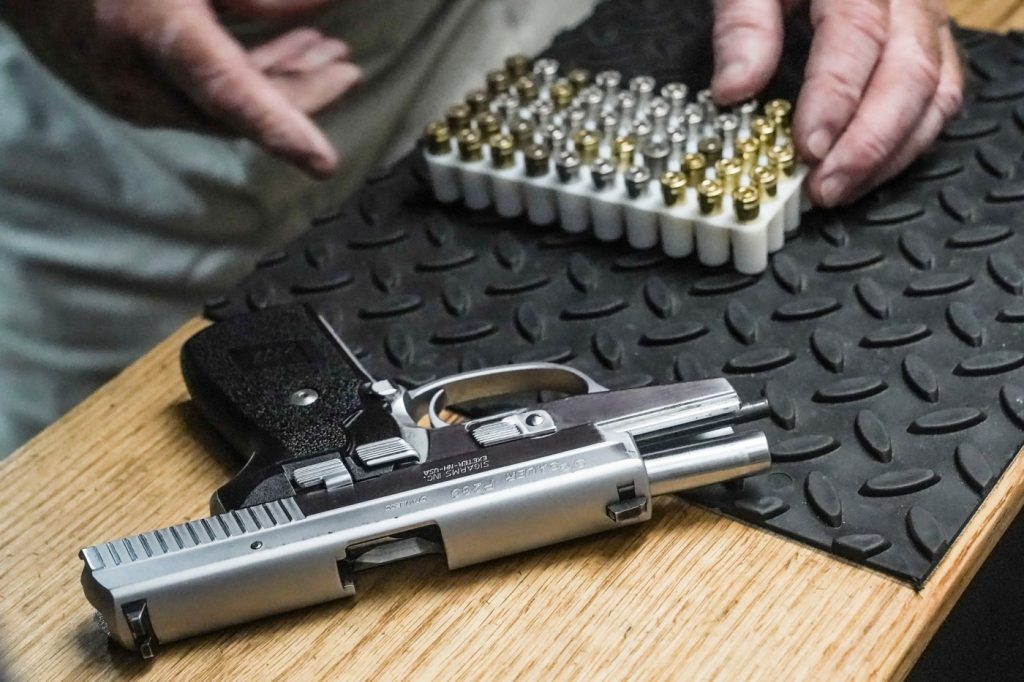Santa Clara County has become the state’s leader in using a red-flag measure that allows authorities to seize firearms from people who have exhibited threatening behavior, capping a years-long effort to cross-train local police and thwart preventable shootings.
According to report issued last week by the California Department of Justice’s Office of Gun Violence Prevention, the county obtained 645 gun violence restraining orders in 2023, overtaking San Diego County, which tallied 503.
The milestone for the South Bay caps a trajectory that began with just seven order filings in 2016 — the year the accompanying law went into effect — and grew steadily as prosecutors realized the value they could have as a proactive measure amid rising gun violence across the country.
“We know this reduces gun violence,” Santa Clara County District Attorney Jeff Rosen said in an interview this week. “This protects individuals during a time they are a threat to themselves or others, and when the presence of a gun is dangerous.”
Gun violence restraining orders empower law enforcement, or a family member, housemate, co-worker, or teacher, to file a petition to temporarily disarm someone deemed to have made credible and serious threats against others or themselves. People can also be disarmed if they have been involuntarily placed in emergency psychiatric care within the past five years, or served with a domestic violence restraining order, though the latter scenario has been the subject of a legal battle that has reached the U.S. Supreme Court.
Such a restraining order must be reviewed by a judge within 21 days, at which point it can be extended, renewed or lifted.
Rosen said the court process ensures that the safety concerns the law looks to address are balanced against protecting constitutional gun rights.
“We have to show that a person is a danger with a high standard of evidence, and a person can petition to get it removed,” he said.
San Diego County has been the only other county to institutionalize its use early on, and filed 2,490 total orders between 2016 and 2023, compared to 1,481 during the same time period in Santa Clara County, which has about half the population of its Southern California counterpart.
Related Articles
Five gunmen surrounded and killed Oakland teen. Police say they’ve identified four, including man who was released from prison months earlier
Two-year federal prison sentence for Sacramento man who stole mail from U.S. Postal Service truck in Oakland
Man shot during robbery in Oakland’s Fruitvale District
Bay Area man man accused of robbing market for gallon of water
Police arrest Marin County teen for distributing lewd images online
Another metric in which San Diego County surpasses the South Bay is in the number of final, or long-term gun violence restraining orders still in effect dating back to 2016, with 723 to Santa Clara County’s 194. But that could be read as a difference in sensibility over the orders, particularly when the troubling circumstances that prompted the orders get resolved.
The gun violence restraining order law in California was inspired by a violent rampage in 2014 in which a disturbed 22-year-old man fatally stabbed three Bay Area students in his apartment in Isla Vista — adjacent to the UC Santa Barbara campusa — and fatally shot two women and a man before killing himself in a shootout with police. The man’s parents had alerted authorities to his worsening behavior and online posts but police backed off after he told them it was a misunderstanding.
In the South Bay, prosecutors and investigators in the district attorney’s office’s Crime Strategies Unit and Gun Task Force have said they want to prevent mass shootings like those at a San Jose VTA railyard in 2021 — the deadliest in Bay Area history, with nine people killed — or the Gilroy Garlic Festival shooting two years earlier.
A few years after those tragedies, Santa Clara County accounts for nearly a quarter of the more than 2,700 gun orders filed in the entire state.
“People have a right to firearms for protection,” Rosen said. “But people who are a danger to themselves should not have guns.”
By the numbers: Gun violence restraining order filings in California
Santa Clara County led the state in obtaining gun violence restraining orders in 2023. Here is a listing of how Bay Area and other comparable counties compare, both in the past year and in the seven full years that the red-flag measure has been in place.
Santa Clara
2023: 645
Since 2016: 1,481
San Diego
2023: 503
Since 2016: 2,490
Los Angeles
2023: 158
Since 2016: 424
Alameda:
2023: 138
Since 2016: 303
San Mateo
2023: 77
Since 2016: 162
Contra Costa
2023: 24
Since 2016: 104
Solano
2023: 22
Since 2016: 133
Napa
2023: 22
Since 2016: 64
Sonoma
2023: 20
Since 2016: 87
San Francisco
2023: 18
Since 2016: 163
Marin
2023: 9
Since 2016: 66
Source: Office of Gun Violence Prevention, California Department of Justice


